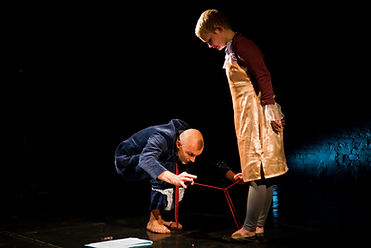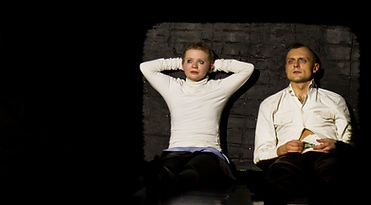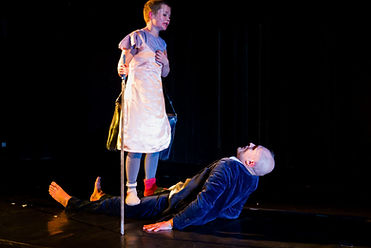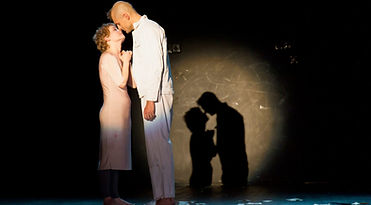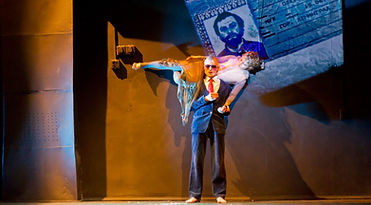BLUEBEARD. HOPE OF WOMEN

BLUEBEARD. HOPE OF WOMEN
BALTIySKY DOM
ST. PETERSBURG, RUSSIA
Duration 1 hours 27 minutes
Directors Maxim Didenko
Premier took place on 2 February 2011
NOMINATIONS
Best Play and Best Director in the Second International Festival of Chamber Theatres and Small Plays “ArtOkraina”
CREATIVE TEAM
Maxim Didenko
Pavel Semchenko
Alisa Oleynik
Lighting Design Igor Fomin
Video Design Georgy Mamatov
Sound Production Andrey Shvetsov
CAST
Maxim Didenko
Alisa Oleynik
There two actors on stage – Maxim Didenko and Alisa Oleynik.
Before the onset the mat of brown paper on which the spectators went to their seats is getting noisily wrapped up. The door to the auditorium is locked with a key. There is nowhere to escape. For the next hour and a half the only way is forward into the space of a new myth, that will happen here and now, in the conjunction of cinema, dance, circus and spoken word. Expressions are minimal: a cubic room and a camera projecting a silent film onto a break wall.
Didenko’s character (Bluebeard) is of our age. If it according to Graham Greene, hell is a sense of eternal loss; Bluebeard lives in sheer pandemonium. All the time he is finding and losing his love, since he is doomed to kill his wives until his own throat gets cut. He meets his victims in a park but he is terribly afraid of the immensity of the first love. Maybe he is a perfectionist and every episode of his life is another love fiasco on the way to his ideal. It is notable that one and the same actress, Alisa Oleynik, plays all of the victims of Bluebeard, even the very first one and the most immense. This play is a duel, a duel between a man and a woman. And experiments with silent film every time provide it with a double or even a triple sense (Teatrall No. 2, 2011).
Every meeting between Heinrich and a woman represents a story of seeking the way for interaction. Alisa and Maxim, both having ample experience of plastic theatre, construct their performance with difficult holds, so brave in their absurdity, or, on the other hand, with beautiful plastic pictures. The play is based on Dea Loher’s Blaubart – Hoffnung der Frauen. Loher has transferred the myth of the woman’s killer into a postmodernist playground, and thus everything that the Charles Perrault’s character has managed to preserve was the name and the myth’s tail. Heinrich Blaubart, the main character of the piece, is like an empty bulb and women fill it is their words of love. When the words become too many, they die. In a sense this piece is about the crisis of the idea of love in the modern world. (А. Dunaeva, St. Petersburg Theatrical Journal, 2011)
